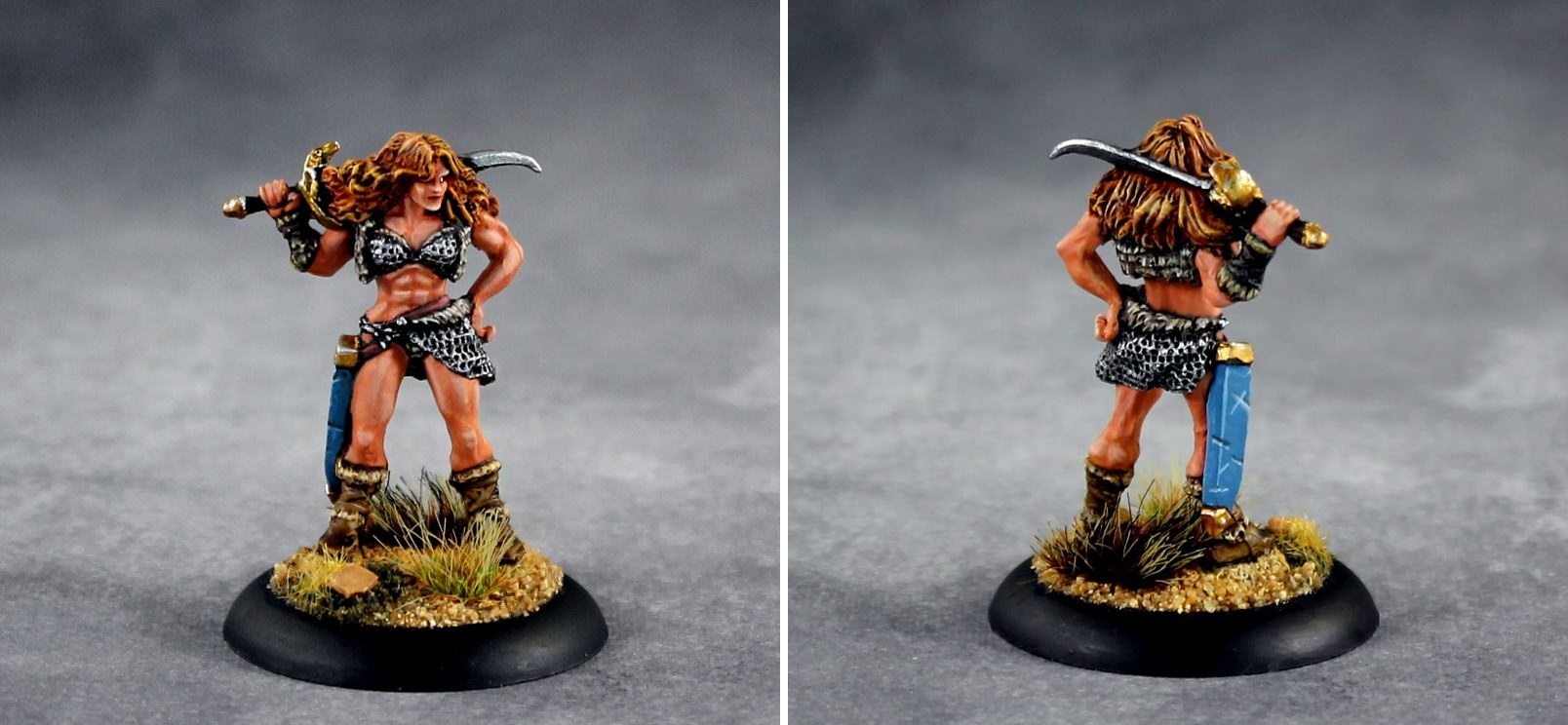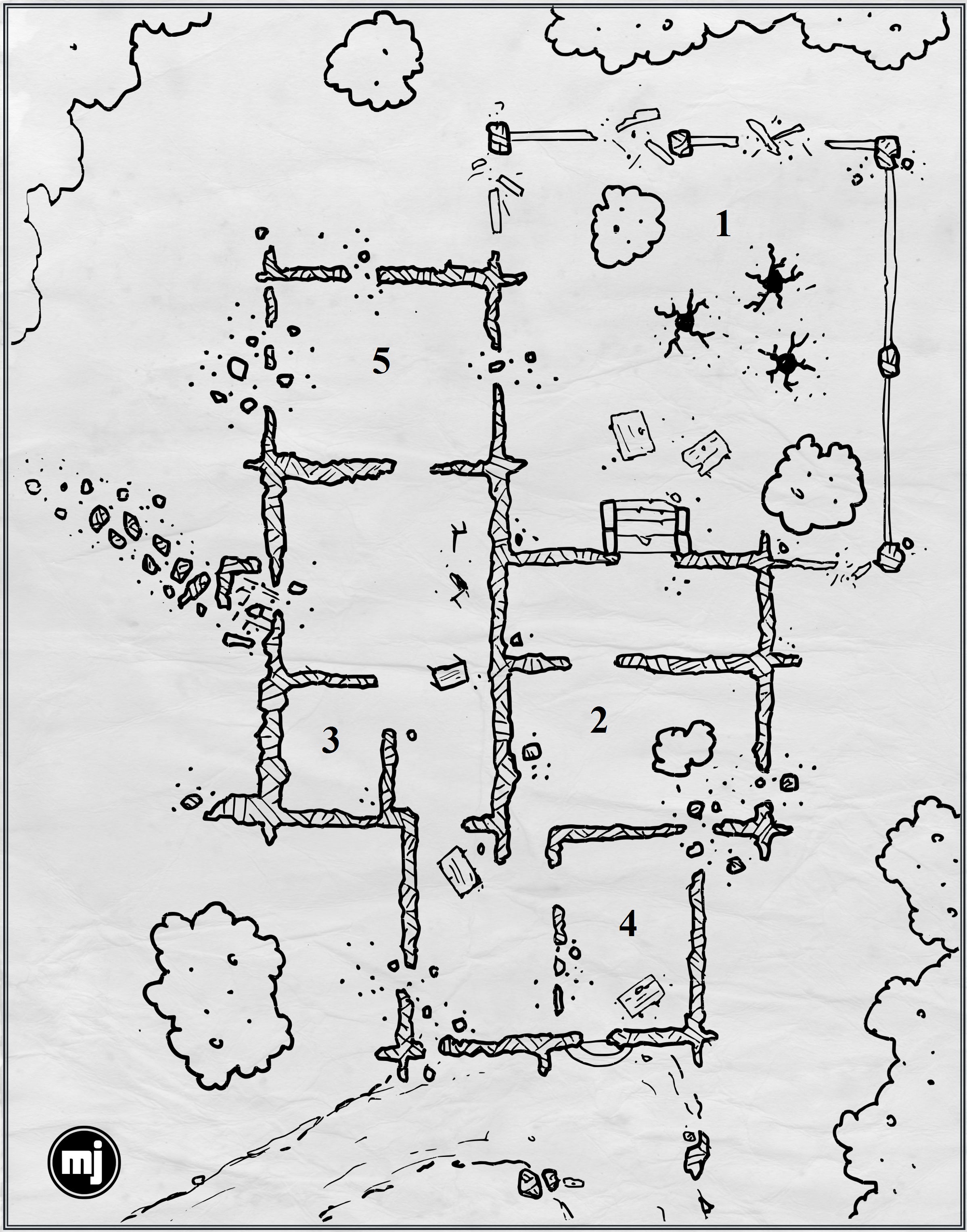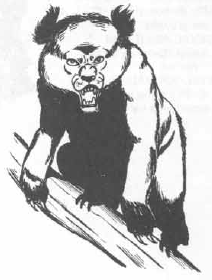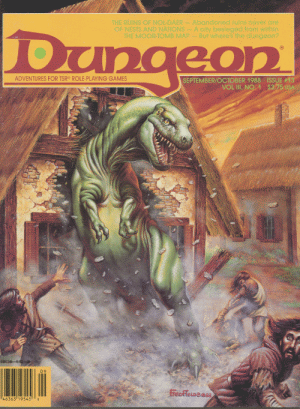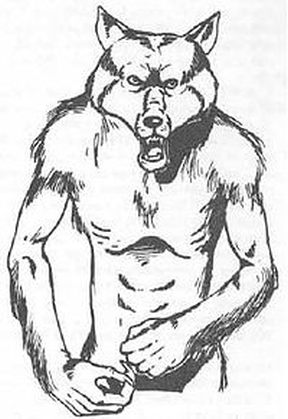More Minotaurs
First, I must show off my exquisitely barbaric miniature for Tupke the Red, my character in my son Christopher’s new D&D campaign. Tupke rocks, and too does Rob of Pennyfew Painting. Click on the pic for the embiggening. The miniature itself comes from Reaper, specifically this model here. Rob brought it to life. I would normally never spend $50 on something that doesn’t contain single malt, but every rule has its exceptions. I couldn’t be more pleased with Rob’s work, and I’m pretty sure that such an awesome miniature is worth at least 50 bonus XP per game session.
Right, Christopher?
Next, I expand on my minotaur variants, adding some additional types to go along with the standard minotaur and the last post’s minotaur shaman. If you want versions of the minotaurs in this post for AD&D, please click here.
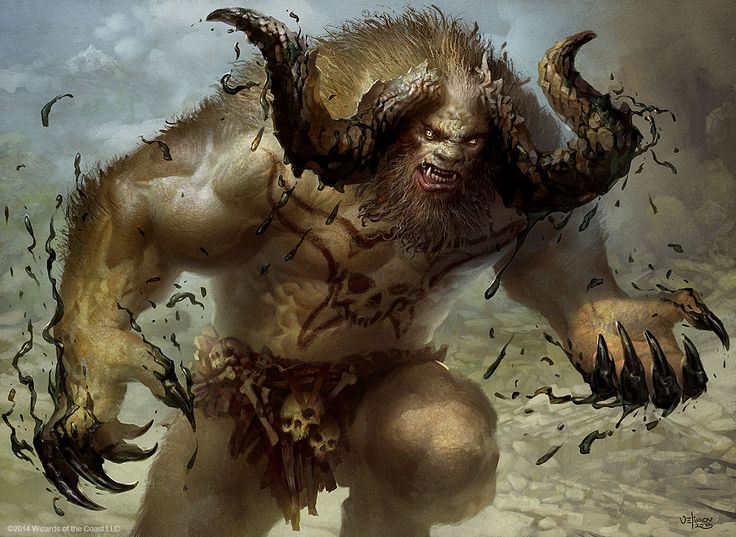
The minotaur blood prophet is the largest and most savage of minotaurs. It eschews the use of manufactured weapons, preferring to rend foes to bloody pieces with its claws, fangs, and horns. When it tastes blood drawn by its fangs, the minotaur blood prophet gains limited precognitive abilities regarding the creature it bit.
Minotaur Blood Prophet
Huge monstrosity, chaotic evil
Armor Class 15 (natural armor)
Hit Points 138 (12d12+60)
Speed 45 ft.
Ability Scores STR 22 (+6), DEX 8 (-1), CON 20 (+5), INT 6 (-2), WIS 16 (+3), CHA 9 (-1)
Skills Perception +6
Senses darkvision 90 ft., passive Perception 16
Languages Abyssal
Challenge 6 (2,300 XP)
Blood Prophecy (Recharge after Short or Long Rest). When the minotaur blood prophet damages a living creature with its bite, the minotaur blood prophet gains limited precognitive abilities related to that creature. Roll 1d20 twice and record the rolls. So long as the minotaur blood prophet can see the creature it damaged with its bite, the minotaur blood prophet can substitute one of the recorded d20 rolls for any d20 roll made by the creature it damaged with its bite, doing so as a bonus action. When the minotaur blood prophet takes a short rest or a long rest, it loses any unused d20 rolls and the precognitive link with the bitten creature vanishes.
Charge. If the minotaur shaman moves at least 10 feet straight toward a target and then hits it with a gore attack on the same turn, the target takes an extra 13 (2d12) piercing damage. If the target is a creature, it must succeed on a DC 17 Strength saving throw or be pushed up to 10 feet away and knocked prone.
Labyrinthine Recall. The minotaur blood prophet can perfectly recall any path it has traveled.
Reckless. At the start of its turn, the minotaur blood prophet can gain advantage on all melee attack rolls it makes during that turn, but attack rolls against it have advantage until the start of its next turn.
Actions
Multiattack. The minotaur blood prophet makes three attacks: two with its claws and one with its gore or one with its bite.
Claw. Melee Weapon Attack: +9 to hit, reach 5 ft., one target. Hit: 13 (2d6+6) slashing damage.
Gore. Melee Weapon Attack: +9 to hit, reach 5 ft., one target. Hit: 18 (2d12+6) piercing damage.
Bite. Melee Weapon Attack: +9 to hit, reach 5 ft., one target. Hit: 11 (2d4+6) piercing damage.
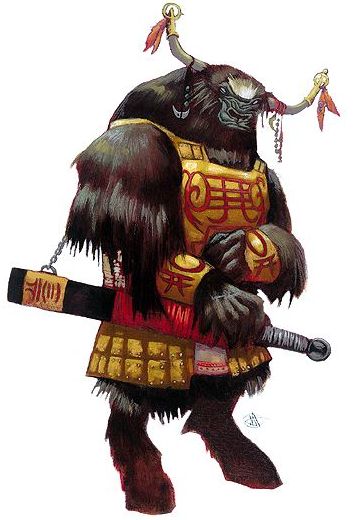
The spirit minotaur, rare and seldom seen in its natural form, furthers the aims of the Lord of Mazes by sowing the seeds of chaos and fear. It does so through the use of magical powers, which include telepathy and shapeshifting as well as illusions and potent attacks.
Spirit Minotaur
Large monstrosity (shapechanger), chaotic evil
Armor Class 14 (natural armor)
Hit Points 85 (10d10+30)
Speed 40 ft., fly 40 ft. (hover)
Ability Scores STR 18 (+4), DEX 11 (+0), CON 16 (+3), INT 15 (+2), WIS 16 (+3), CHA 12 (+1)
Skills Deception +3, Perception +5
Senses darkvision 60 ft., passive Perception 15
Languages Abyssal, two other languages, telepathy 60 ft.
Challenge 4 (1,100 XP)
Charge. If the spirit minotaur moves at least 10 feet straight toward a target and then hits it with a gore attack on the same turn, the target takes an extra 9 (2d8) piercing damage. If the target is a creature, it must succeed on a DC 14 Strength saving throw or be pushed up to 10 feet away and knocked prone.
Innate Spellcasting. The spirit minotaur’s spellcasting ability is Intelligence (spell save DC 12, +4 to hit with spell attacks). The spirit minotaur can innately cast the following spells, requiring no material components:
At will: detect thoughts, minor illusion, prestidigitation
3/day each: silent image, thunderwave
2/day each: invisibility, ray of enfeeblement
1/day each: lightning bolt, major image
Labyrinthine Recall. The spirit minotaur can perfectly recall any path it has traveled.
Reckless. At the start of its turn, the spirit minotaur can gain advantage on all melee attack rolls it makes during that turn, but attack rolls against it have advantage until the start of its next turn.
Regeneration. The spirit minotaur regains 5 hit points at the start of its turn if it has at least 30 hit points.
Shapechanger. The spirit minotaur can use its action to polymorph into a Medium humanoid or Small or Medium beast it has seen, or back into its true form. Its statistics, other than its size, are the same in each form. Any equipment it is wearing or carrying isn’t transformed. It reverts to its true form if it dies.
Actions
Multiattack. The spirit minotaur makes two attacks: one with its greatsword and one with its gore.
Greatsword. Melee Weapon Attack: +6 to hit, reach 5 ft., one target. Hit: 14 (3d6+4) slashing damage.
Gore. Melee Weapon Attack: +6 to hit, reach 5 ft., one target. Hit: 13 (2d8+4) piercing damage.
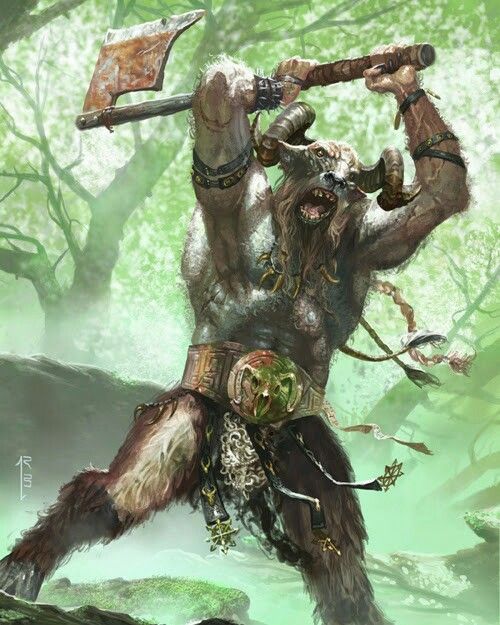
Beastman
Medium monstrosity, chaotic evil
The beastman is a goat-headed monstrosity. It represents the lowest rung on the ladder of those who serve the Lord of Mazes. The beastman lives in fear of its more powerful kind. Minotaurs barely tolerate the beastman, and during lean times a beastman’s flesh chews just as easily as a human’s. The beastman’s cowardice does not extend to creatures it believes it can bully or hurt.
Armor Class 13
Hit Points 22 (4d8+4)
Speed 35 ft.
Ability Scores STR 14 (+2), DEX 16 (+3), CON 12 (+1), INT 8 (-1), WIS 13 (+1), CHA 8 (-1)
Skills Perception +3
Senses darkvision 60 ft., passive Perception 13
Languages Abyssal
Challenge 1/2 (100 XP)
Charge. If the beastman moves at least 10 feet straight toward a target and then hits it with a gore attack on the same turn, the target takes an extra 4 (1d8) piercing damage. If the target is a creature, it must succeed on a DC 12 Strength saving throw or be pushed up to 10 feet away and knocked prone.
Reckless. At the start of its turn, the beastman can gain advantage on all melee weapon attack rolls it makes during that turn, but attack rolls against it have advantage until the start of its next turn.
Actions
Battle Axe. Melee Weapon Attack: +2 to hit, reach 5 ft., one target. Hit: 6 (1d8+2) slashing damage.
Gore. Melee Weapon Attack: +3 to hit, reach 5 ft., one target. Hit: 7 (1d8+3) piercing damage.
